A security deposit receipt is a document that serves as proof that a tenant has paid a security deposit to a landlord. It is an essential part of the rental agreement process and provides both parties with a record of the transaction.
This receipt is typically given to the tenant after they have paid the security deposit and includes important details such as the amount paid, the date of payment, and the name of the landlord or property manager.
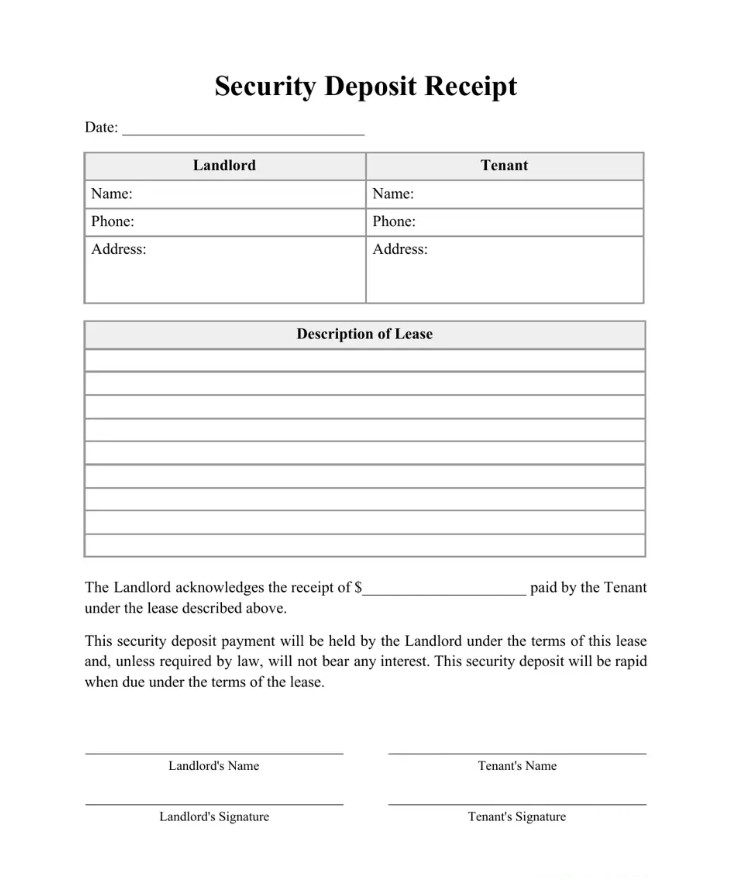
Why is a Security Deposit Receipt Important?
A security deposit receipt is important for several reasons:
- Legal Protection: The receipt acts as evidence that the tenant has fulfilled their financial obligation to the landlord. In case of any disputes or legal issues, the receipt can be used as proof of payment.
- Transparency: Providing a receipt establishes transparency between the landlord and tenant. It ensures that both parties are aware of the amount paid and the date of payment.
- Record Keeping: The receipt serves as a record for both the landlord and the tenant. It can be used for future reference or when the tenant moves out and is eligible for a refund of the security deposit.
How to Create a Security Deposit Receipt
Creating a security deposit receipt is a straightforward process. Here’s how you can do it:
- Gather Information: Collect all the necessary details, including the tenant’s name, landlord’s name, property address, amount paid, date of payment, and payment method.
- Use a Template: You can find various security deposit receipt templates online. Choose one that suits your needs or create your own using word processing software.
- Fill in the Details: Fill in the template with the gathered information. Double-check for accuracy and make sure all the necessary information is included.
- Print and Sign: Print the receipt and sign it as the landlord or property manager. If possible, have the tenant sign it as well to acknowledge receipt of the security deposit.
- Provide Copies: Give a copy of the receipt to the tenant for their records and keep a copy for yourself.
Examples of Security Deposit Receipts
Here are a few examples of how a security deposit receipt may look:
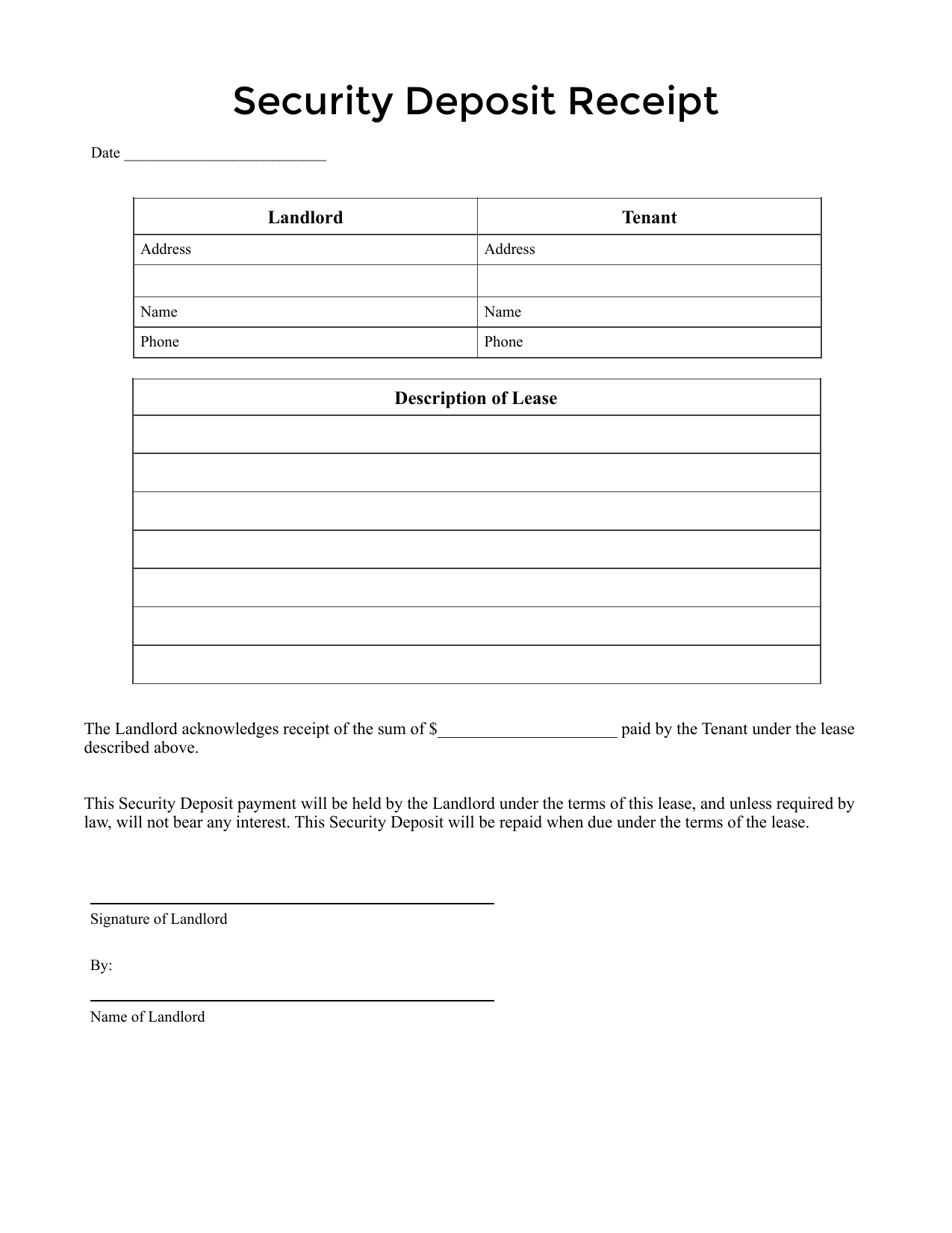
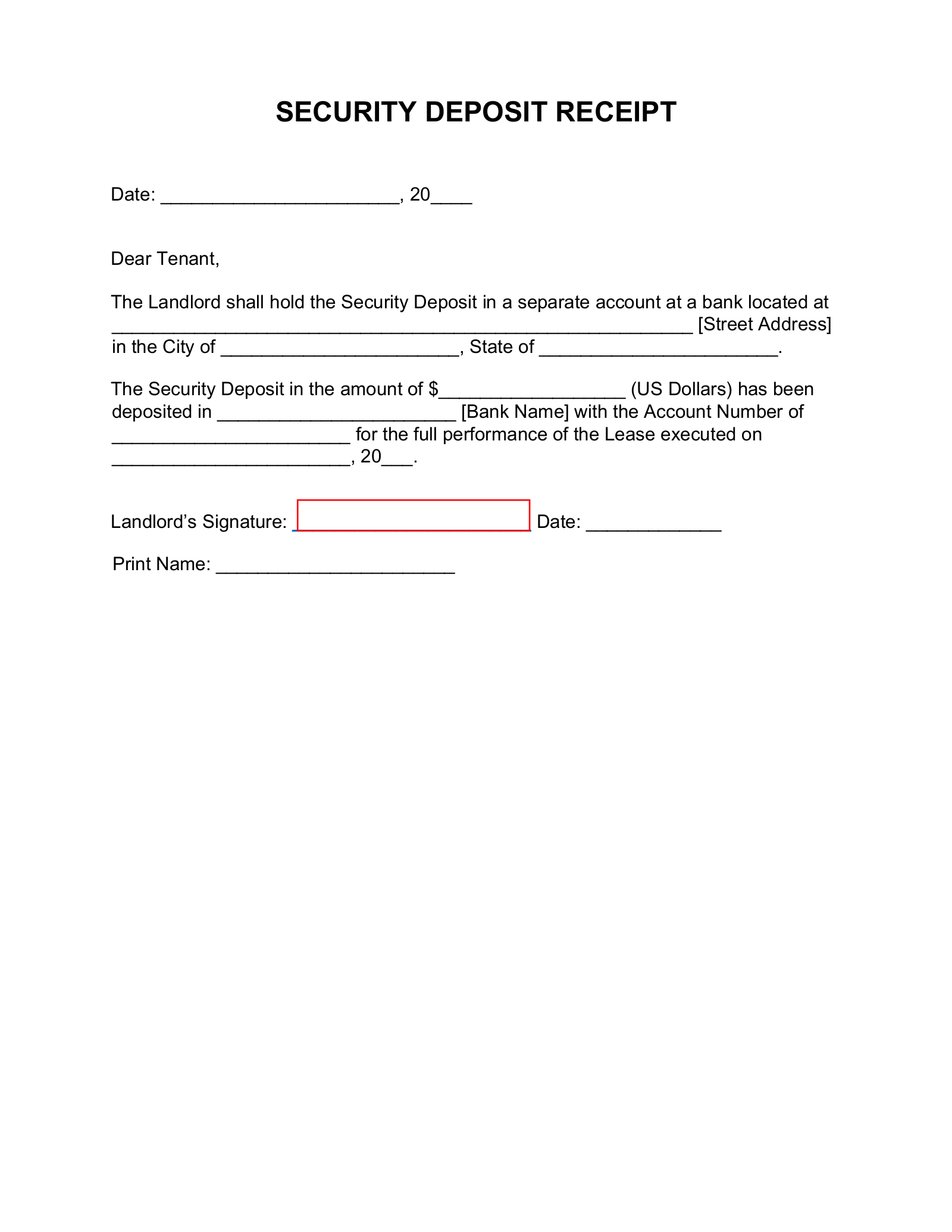
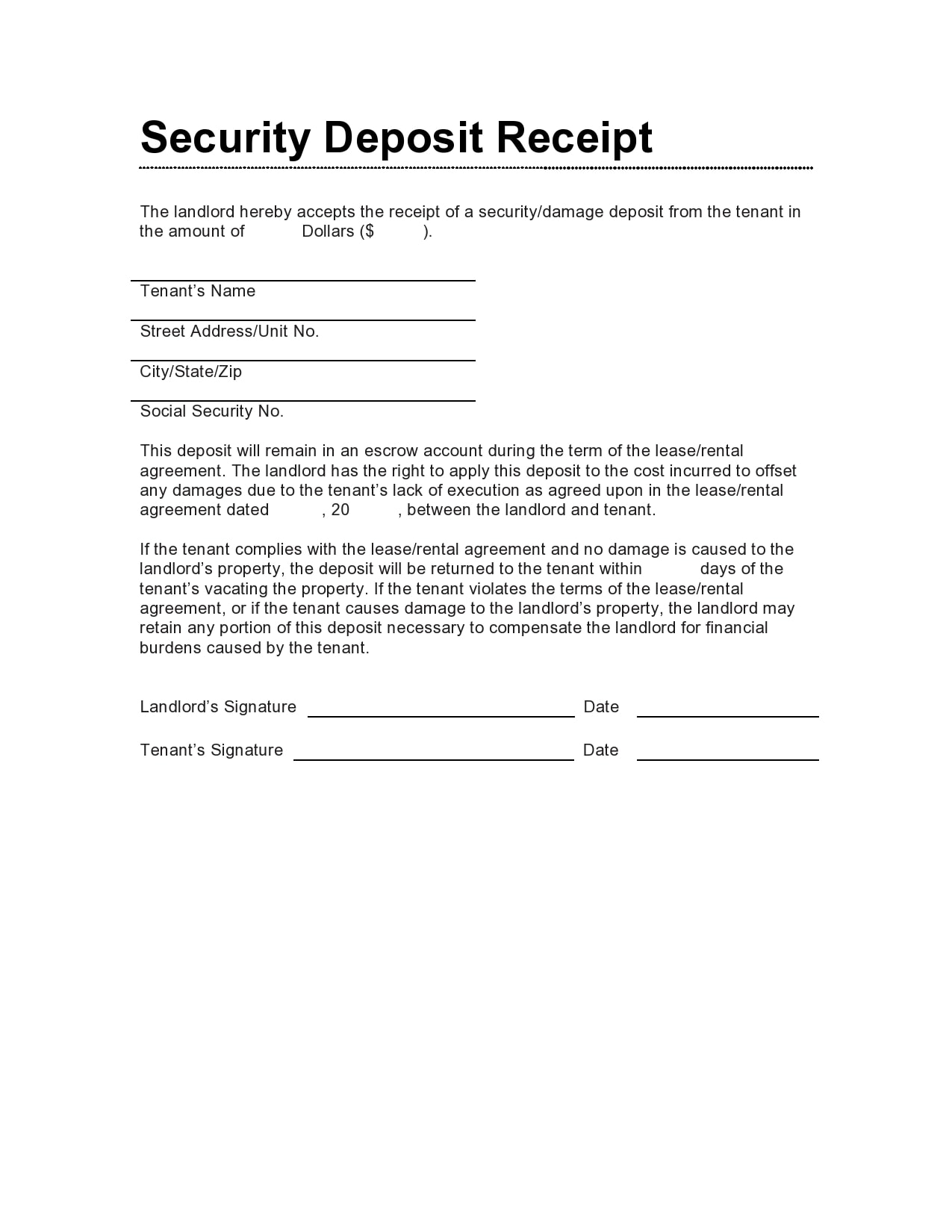
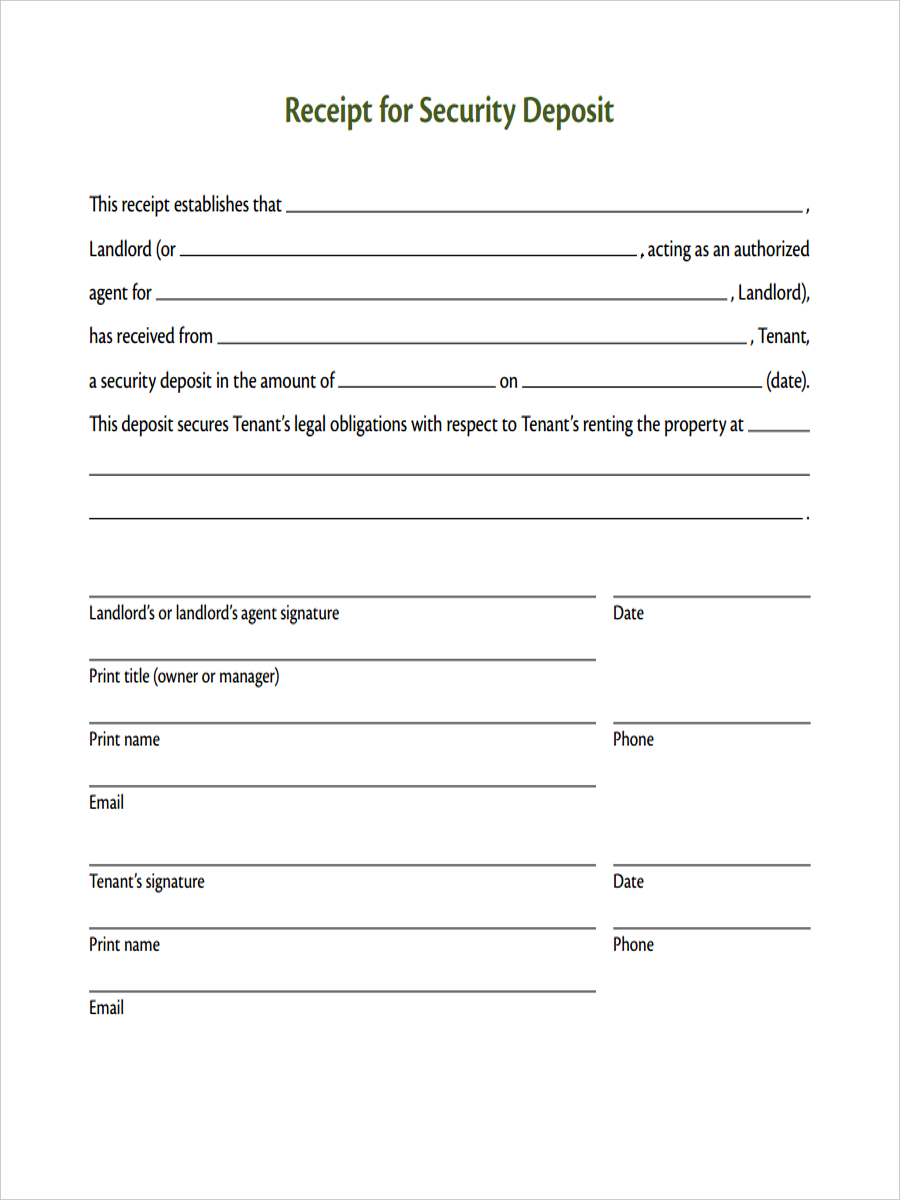
Tips for Successful Security Deposit Receipts
Follow these tips to ensure your security deposit receipts are effective:
- Be Clear and Detailed: Include all the necessary information, such as names, addresses, payment details, and dates, to avoid any confusion.
- Use Legible Fonts: Choose fonts that are easy to read to ensure that all the information on the receipt is clear.
- Keep Copies: Make sure to keep copies of all the security deposit receipts you issue. This will help you maintain a record of payments and provide evidence if needed in the future.
- Provide Receipts Promptly: Issue the receipt to the tenant as soon as they make the payment. This shows professionalism and helps build trust between you and the tenant.
- Consider Digital Options: Instead of printing physical receipts, you can explore digital options such as sending the receipt via email or using online platforms for rental management.
Conclusion
A security deposit receipt is a crucial document that provides proof of a tenant’s payment to a landlord. It serves as a legal protection for both parties and ensures transparency and record-keeping.
By following the steps outlined above and incorporating the provided tips, you can create effective and professional security deposit receipts for your rental agreements.
Security Deposit Receipt Template – Download